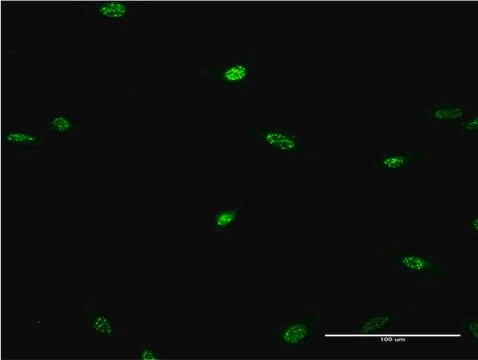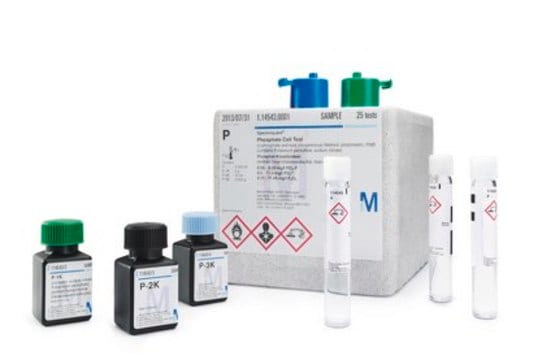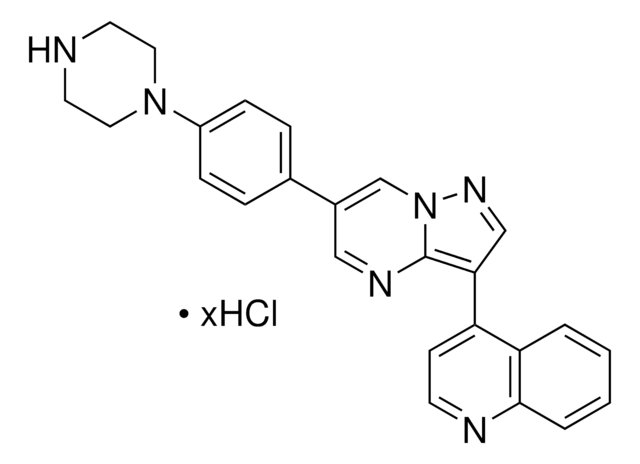ABE1402
Anti-LHX2 Antibody
serum, from rabbit
Synonym(s):
LIM/homeobox protein Lhx2, Homeobox protein LH-2, LIM homeobox protein, LHX2
About This Item
IF
WB
immunofluorescence: suitable
western blot: suitable
Recommended Products
biological source
rabbit
Quality Level
antibody form
serum
antibody product type
primary antibodies
clone
polyclonal
species reactivity
mouse, human
technique(s)
ChIP: suitable (ChIP-seq)
immunofluorescence: suitable
western blot: suitable
NCBI accession no.
UniProt accession no.
shipped in
dry ice
target post-translational modification
unmodified
Gene Information
mouse ... Lhx2(16870)
General description
Immunogen
Application
Chromatin Immunoprecipitation Analysis: A representative lot detected Lhx2-targeted promoter and enhancer regions using α6hi/CD34+ skin cells enriched in hair follicle stem cells (HF-SCs) from mice at the second telogen developmental stage (Folgueras, A.R., et. al. (2013). Cell Stem Cell. 13(3):314-327).
Chromatin Immunoprecipitation-Sequencing Analysis: A representative lot detected Lhx2-targeted promoter and enhancer regions by a genome-wide ChIP-seq analysis using α6hi/CD34+ skin cells enriched in hair follicle stem cells (HF-SCs) from mice at the second telogen developmental stage (Folgueras, A.R., et. al. (2013). Cell Stem Cell. 13(3):314-327).
Immunofluorescence Analysis: A representative lot (1:1,000 dilution) detected Lhx2 immunoreactivity in human skin samples by fluorescent immunohistochemistry using OCT-embedded, PFA-fixed cryosections (Data courtesy of Dr. Elaine Fuchs, Howard Hughes Medical Institute, The Rockefeller University ).
Epigenetics & Nuclear Function
Nuclear Receptors
Quality
Western Blotting Analysis: A 1:5,000 dilution of this antibody detected doxycycline-induced LHX2 expression in 10 µg of Murine keratinocyte K14rtTA-LHX2-TRE cell lysate.
Target description
Physical form
Storage and Stability
Handling Recommendations: Upon receipt and prior to removing the cap, centrifuge the vial and gently mix the solution. Aliquot into microcentrifuge tubes and store at -20°C. Avoid repeated freeze/thaw cycles, which may damage IgG and affect product performance.
Other Notes
Disclaimer
Not finding the right product?
Try our Product Selector Tool.
Storage Class Code
12 - Non Combustible Liquids
WGK
WGK 1
Flash Point(F)
Not applicable
Flash Point(C)
Not applicable
Certificates of Analysis (COA)
Search for Certificates of Analysis (COA) by entering the products Lot/Batch Number. Lot and Batch Numbers can be found on a product’s label following the words ‘Lot’ or ‘Batch’.
Already Own This Product?
Find documentation for the products that you have recently purchased in the Document Library.
Our team of scientists has experience in all areas of research including Life Science, Material Science, Chemical Synthesis, Chromatography, Analytical and many others.
Contact Technical Service







